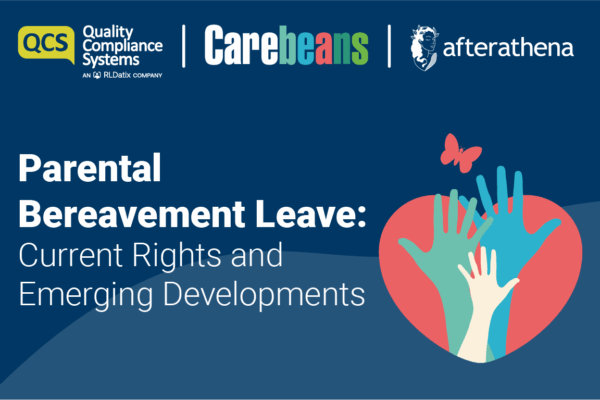 We’ve all got used to the phrase ‘best interests’. It can give a comforting glow to think that we’re making decisions in someone’s best interests, but lots of people in health and social care don’t actually know how to go about making a best interests decision. People have an idea it’s something to do with the Mental Capacity Act (MCA), but often don’t know what that would look like in practice.
We’ve all got used to the phrase ‘best interests’. It can give a comforting glow to think that we’re making decisions in someone’s best interests, but lots of people in health and social care don’t actually know how to go about making a best interests decision. People have an idea it’s something to do with the Mental Capacity Act (MCA), but often don’t know what that would look like in practice.
When to make a best interests decision
It should be obvious, but is worth repeating, that you can’t impose your will on someone with capacity simply by announcing that it’s in their best interests to do as you think they should.
The person must lack the mental capacity to make a particular decision, at the time it needs to be made.
So Jim might be serenading the birds in the garden with his repertory of football chants, but unless there’s a decision to be made, it doesn’t really matter whether he’s got capacity or not. But if it starts to snow in the night, and Jim’s in his dressing gown and slippers, insisting he’s off down to the football ground, it might really matter that you know how to identify whether he’s got capacity to make this decision.
See our article on assessing capacity.
Different things matter to each of us
We must consider what is in the best interests of this individual, in the light of their personality, history, and values. People are all very different: look around your own family or your staff group, and you’ll identify real differences in what makes people happy, or in what they would hate to be made to do.
The mandatory checklist
Except in an emergency when there isn’t time, the MCA lays out a checklist of factors to be considered when you are working out a best interests decision for someone who lacks mental capacity.
These are things to check, to make sure, for example, that you’re not stereotyping the person or making assumptions (like, ‘no older people should want to go to a football match, they’re better off watching it on TV’), and to prompt you to look for the option that restricts the person’s freedoms the least, while meeting the need.
The checklist asks you to consider:
- Is the person likely to regain capacity and, if so, can this decision wait?
- If this is a treatment decision, has the person made an advance decision to refuse this treatment? (Because, if they have, nobody can give this treatment.)
- Is there anybody (such as an LPA attorney) who has the right to make this decision? (Because, if there is, it isn’t your decision to make.)
- What are the person’s wishes and feelings about this decision? Have they written anything down that might give you clues as to how they’d decide if they had capacity?
- What do you know about this person’s history, their spiritual or cultural beliefs, and what is important to them, that might influence this decision?
- Have you made sure to consult people close to this person – relatives, or close friends – who will know far more than you probably do, about what this person might decide in this situation if they had capacity?
- Are you sure that nothing in your decision-making is intended to bring about the person’s death? (People do die, and that’s natural, but you must not do anything with the intention of ending someone’s life).
- Look really inventively for the least restrictive option to meet the need – don’t limit someone’s freedom to live as they wish, any more than you absolutely have to.
A care plan based on the person’s best interests
For small, everyday decisions, the checklist above will help you to understand what’s important to this individual, what do they love doing or would hate to do. Staff are protected from liability provided they work according to the care plan, but this must be based on the person’s best interests.
A balance-sheet approach
For bigger decisions, such as a change to where they live, it’s a really good idea to use a balance-sheet approach.
List the pro’s and con’s of each option, using the wisdom gained from friends and relatives: make sure you give as much weight as possible to what the person actually wants to do, even if they lack mental capacity to make this decision for themselves.
When the decision was about whether to stay in a care home or return home to live with her husband of 50 years (and they missed each other desperately), the judge was surprised that the care provider seemed to know very little about what was important to the person, or what her health was like.
Recording how you reached your decision
You will be acting within the MCA if you do your best to work out what is in the best interests of someone. But you need to show that you’ve considered the checklist, rather than just imposing your own views about what should happen to the person. To do this, you need to record that you’ve considered the checklist, together with anything else that this specific person would think important. You need to write down what the person’s wishes and feelings are, and make sure you explain why you’ve not gone along with the options you’ve not chosen.
You need to explain how you dealt with any disagreements: sometimes it’s only natural that people might have different views about the person’s best interests.
Code of Practice
On this, and for everything to do with making best interests decisions, do look at the Code of Practice, where chapter 6 is all about this topic. It’s not only a good read (which it is, trust me) but the law says you must ‘have regard to’ the Code in the way you care for people who might lack mental capacity.
You can read it, or download it free, from Mental Capacity Code of Practice





